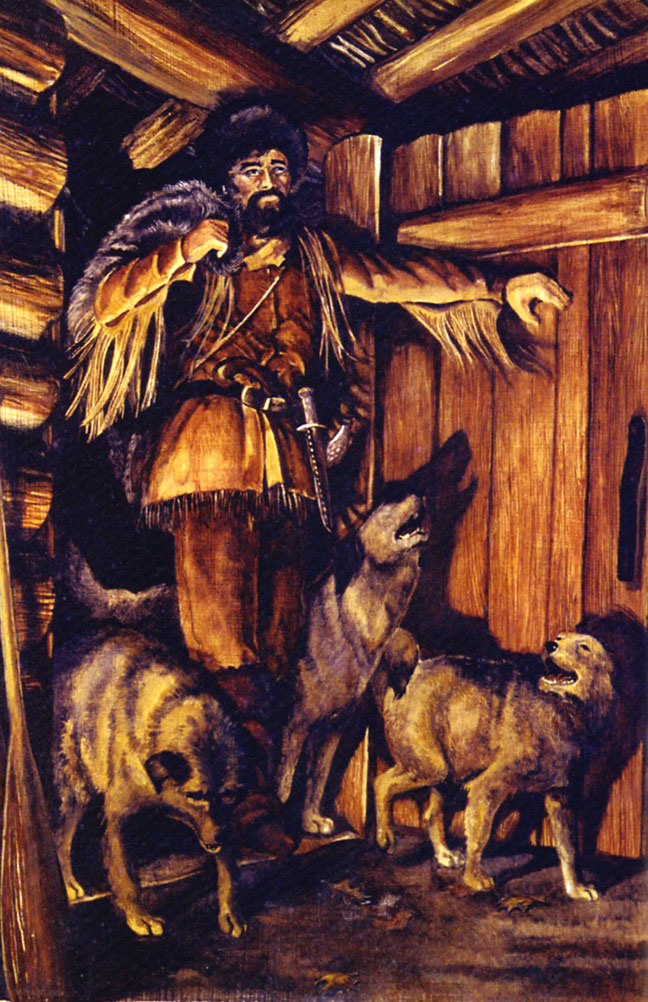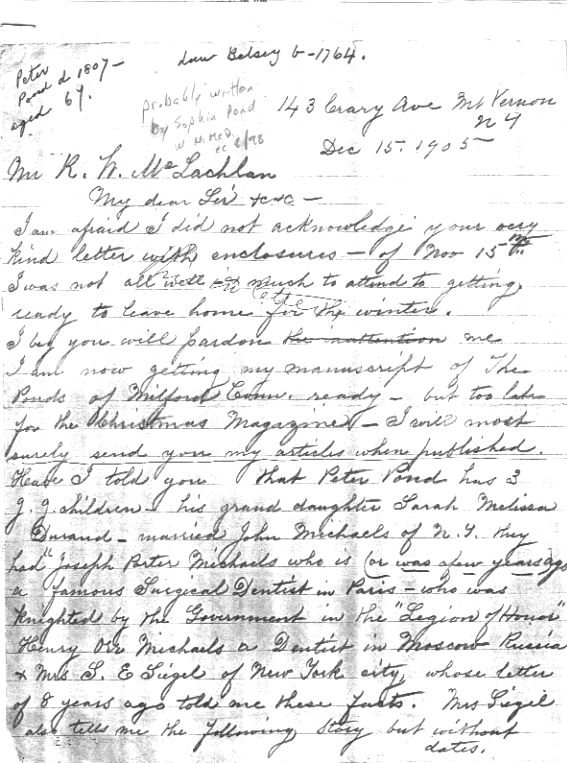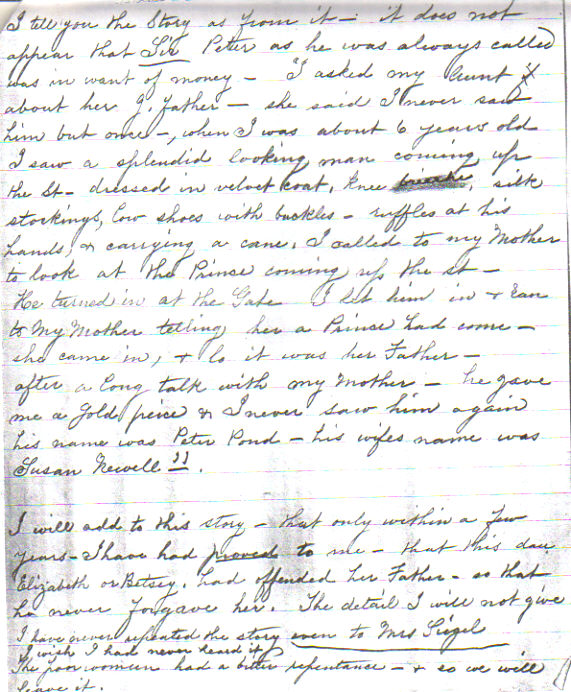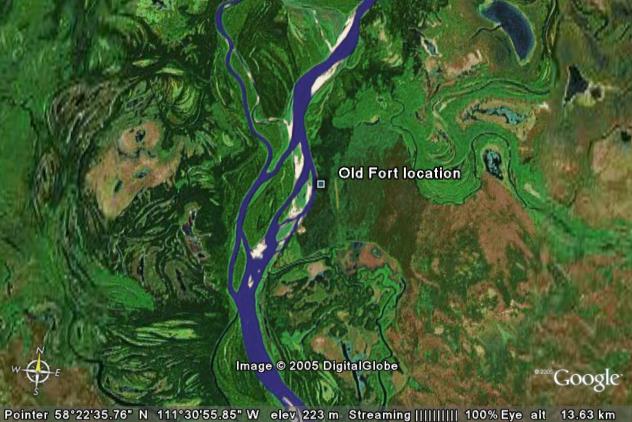Peter Pond newsletter :: February 2006 :: #23
Newsletter 23
Hello in mid-winter. So much more to talk about on a host of subjects. Let's start with a Peter Pond book idea from one of the newest members:
PETER POND BOOK COMING?
PETER POND BROTHERS
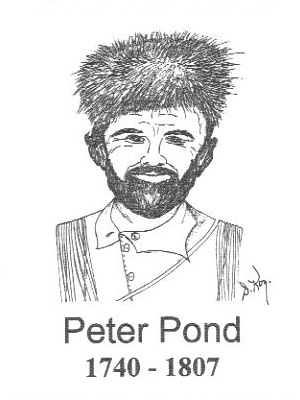
David Chapin of New Hampshire wrote to me several weeks ago through Milford Historian Dick Platt about his book idea on Peter Pond. He was asking about Peter Pond possibly being involved in the fur-trade with some of his other brothers, like Phineas, Zachariah and even Charles in his Mississippi Valley before Canada and whether the rum he used came from the West Indies through Milford. I never heard of any of those notions. Here's what he said about himself:
Bill,
Well, the research has been evolving. I began with research on John Ledyard a couple of years ago. You may have heard of Ledyard. He was about 10 years younger than Pond and was also originally from the coast of Connecticut. He went with Captain Cook around the world, then tried to walk across Siberia to North America, which he also hoped to walk across. In background reading on Ledyard, Pond's name came up a few times as they were both precursors to Lewis and Clark and Mackenzie. I realized that their careers are kind of mirror images of each other, and that each realized the growing importance of the Pacific to North America. My project turned into a sort of dual treatment/biography of Ledyard and Pond and their parallel dreams of wanting to circumnavigate the world.
I soon found that two other books were in the works on Ledyard. One came out last spring and the other is due out in September. With a crowded field around Ledyard, my focus has turned more and more to Pond. I might still be doing a dual biography of the two of them, but it is looking increasingly like I might leave Ledyard out or reduce him to a side issue. Basically all my Ledyard research is on hold until I see the second book about him.
My main goal is to place Pond in the context of global exploration and trade, the eighteenth century quest of the Northwest Passage, and the Anglo world's discovery of the importance of the Pacific. Pond was one of the first people to realize how important the north Pacific would soon become, even if he never got there himself. He represents for me a certain global perspective that would blossom among Americans in the years after independence.
Geographic exploration, particularly in the north has been a focus of mine, and my first book "Exploring Other Worlds" was largely on the 19th century explorer Elisha Kane and his lover the spiritualist Margaret Fox. I also have a longstanding interest in the Canadian fur trade and canoe routes, so this Pond project is a good fit.
Regards,
Dave
Here are two info links on Chapin and his work: (1) a review of "Exploring Other Worlds" and (2) how to obtain that book through Amazon).
TAR SANDS IN THE NEWS
As tensions increase in the Middle East, it seems logical that alternative oil sources are sought. So it's not surprising the tar sands that made Fort McMurray a boomtown have recently come under media scrutiny. Here is treatment given on the "60 Minutes" television news magazine. Read the whole script, click "tar sands" on the right, then "reporter's notebook" for reporter Bob Simon's impressions of the area
Here is a BBC News article on the tar sands that includes how Peter Pond was probably the first white man to see them. Click on "Alberta oil sands" at right towards bottom of story to learn more about them.
Peter Pond Society member Art Avery said the "60 Minutes" piece was aired in Fort McMurray. He noted that Vice President Dick Cheney was due to tour the tar sands in September but something in Washington cancelled the visit. It would have been a first for a U.S. president or vice president to make the trip. Art said Dick still wants to visit.
SECOND ROAD TO FORT MCMURRAY
Art also noted though there is plenty of work to do and jobs available in the tar sands there aren't that many workers around. One reason is lack of accommodations available, and it's hard to get to FM since it's so isolated. So a new road is in the works from La Loche in northern Saskatchewan to go with the lone one that comes from due south out of Edmonton. Train service reached FM in 1919, an all-season road in 1971. Here is a September story from FORT MCMURRAY TODAY on the proposed road.
It should be noted that La Loche is the most northerly settlement on Lake La Loche. Methye Portage (also called Portage La Loche) starts at the north end of the lake, ending at the Clearwater River 10 miles further north. Here's hoping the venerable portage, which Peter Pond was the first white man to traverse, is not totally abandoned or forgotten with the advent of the new mechanized road nearby.
NORTHERN SK LAND USE PLAN
Speaking of northern Saskatchewan development, I am obliged to pass along this from Peter Pond Society member Ric Driediger who enabled my 1988 Clearwater trip. The Churchill River system starts at Lake La Loche:
For the past 5 years Saskatchewan Environment has been working on a land use plan for much of the area we use for canoeing including the Churchill River region. The first draft of the Plan is finally completed. The process was marred with conflict between the 'developers' and the 'preservers'. In the end the 'preservers' were so frustrated by the process that they left the table. They hired their own researcher to fill in many of the missing pieces in the data used to write the plan. Saskatchewan Environment decided not to use the data collected by this researcher in their report. Hopefully they will use this information in future drafts of the draft plan.
My first reaction to this report is that it doesn't place enough emphasis on the sensitivity of the whole region. They highlight some regions as environmentally sensitive. However, resource extraction is allowed in these regions after a review. My experience with reviews is that they are only a process to go through before something is allowed. Then, by far the majority of the region is called a Management Zone. Here resource extraction is encouraged. I don't see any environmental preview process. I hope I missed it.
Please read through this report. Send your comments to those listed in the report. If possible attend one of the Local Advisory Board Meetings. There is one held in Prince Albert on February 28 and one in La Ronge on February 21. Let us show the Saskatchewan Government that there are many people who care deeply about what happens in this region.
Sincerely,
Ric Driediger
Churchill River Canoe Outfitters
Horizons Unlimited Wilderness Services
Box 1110
La Ronge, SK Canada S0J 1L0
web site)
toll free: 1-877-511-2726
phone/fax: 306-635-4420
MORE Peter Pond SCHOLARSHIP
I have found 2 pieces of Peter Pond scholarship by Canadians.
One is entitled "Peter Pond, His True Confession" by Jon Whyte in a book called "Stories from Western Canada, a selection by Rudy Wiebe," Macmillan of Canada, 1972. Whyte alleges he found the ripped out parts of Peter Pond's journal explaining how the Wadden murder took place, part of a conspiracy with Wadden's wife, all written in dialect mimicking Peter Pond's style. It's about five pages and rather interesting if not funny. I commend it to you. Whyte was a poet, who died in 1992. As you may know, the Wadden murder was the first of two Peter Pond was implicated in, leading to his being replaced at the Athabasca post in 1788 by Alexander Mackenzie.
The other is "Creating the Distance of Print: The Memoir of Peter Pond, Fur Trader," by Bruce Greenfield, Early American Literature Magazine, 2002, No. 3. Greenfield, a Dalhousie University English professor, contends Pond was trying to join Mackenzie and other popular adventure writers of the day by writing his diary for publication. But it was discovered years later, before an editor had a chance to work on it, eventually published 1906 in its original raw form.
So here we have Greenfield seriously contending Peter Pond was writing for publication while Whyte, apparently tongue in cheek, says it was meant to be a private diary with the later damaging part suppressed by the family.
I can email Greenfield and snail mail Whyte, both on request. As Barry Gough commented: "Peter Pond just won't stay in the grave."
NEW INNIS BOOK
There have been several biographies through the years on Harold A. Innis, Peter Pond's original biographer, including one by Peter Pond Society member Paul Heyer. Here is the latest, "Marginal Man: The Dark Vision of Harold Innis," by Alexander John Watson, published in January, available through Amazon.
Weighty at 525 pages for $65. Heyer said he has not read it yet but heard it took 30 years to complete. Reaction among Innis "brain trust" appears to be mixed, he added.
Another Innis vignette: I just finished reading "Fur Trade in Canada," the 1930 Innis work that prompted him to write about Peter Pond next. It was a 1961 Yale University Press edition with introduction by the late Yale history Prof. Robin Winks, lauding Innis as one of the great minds of the 20th century. Winks mentions a diary Innis kept during his summer of 1924 canoe trip down the Peace and Slave rivers, finishing by steamer on the Mackenzie, to get a feel for fur trade country before writing. Heyer says he'll ask around on how to get a copy
ARTIFACTS UPDATE
Connecticut archeologist Nick Bellantoni and Parks Canada archeologist Jennifer Hamilton have started correspondence on possibly having the Sturgeon Fort Peter Pond artifacts discussed in Peter Pond Society 22 loaned to Connecticut. Both are Peter Pond Society members and receive this newsletter. Jennifer, in charge of the artifacts stored in Winnipeg, will probably get to the matter in April. "At that time, I hope to provide digital images of the artifacts which can use to develop a display concept. At this point, I have no idea if I will be successful in loaning these artifacts across the border," she said.
MORE Peter Pond ART
Following appearance of the Peter Pond Beaver Club medal in Peter Pond Society 22, I have more applicable art.
You'll be interested in 2 letters on Peter Pond I found in the New Haven Colony Historical Society. The 12/15/1905 letter is probably from Mrs. Nathan G. (Sophia) Pond though not signed. The other dated 12/18/1905 is from R.W. McLachlan of the Numismatic and Antiquarian Society of Montreal, and "Madam" is probably her.
The 2 corresponded in her effort to find out more about Peter Pond in Canada after she rescued the ms./diary from being totally burned in 1868. I call her the whistle blower. The diary finally had its first publication in 1906, as stated. Hope you can make out the handwriting. Interesting anecdote in the letter to MacLachlan telling of Peter Pond maybe not "in want of money" though had a strained relationship with his daughter, Elizabeth. She had 12 children thru John Durand. Peter Pond Jr. had none and died at sea. Perhaps the bad feelings are why the Beaver Club medal passed down through Peter Pond's brother, Charles, and not his daughter.
And note McLachlan saying: "I have no doubt, also, about the story that his wife was a squaw..." adding such liason was common practice among "the old norwesters." I surmise he was responding to a question from Mrs. Pond, as if this had been a concern among the family for years. I am not surprised by McLachlan's remark. Previous newsletters have addressed several instances of Peter Pond's apparent metis offspring.
The fifth attachment is from Peter Pond Society member Darin Zandee. He sent an aerial map of the likely location of Peter Pond's original Athabasca River fort dating from 1778, fitting the description of the fort being 30 miles upstream of Lake of the Hills on the Elk River (the old names) at the confluence with the Embarrass River. The area is called old fort by the locals.
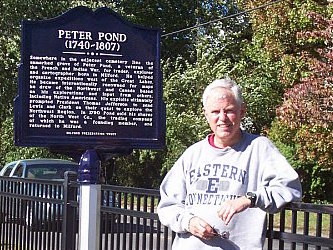
Au revoir,
Bill
website design by Daniel Ortoleva
